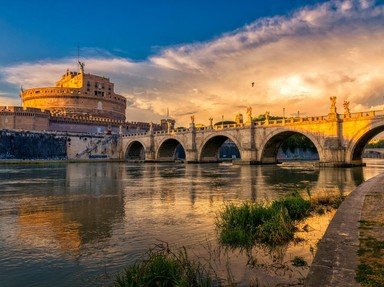Quiz Answer Key and Fun Facts
1. On the Palatine Hill there is a cave where, according to the legend, Remus and Romulus were found by a mother wolf after they have been left to drown on the banks of the Tiber River. What is the name of the cave?
2. There is another legend that one of the Roman heroes killed a fire-breathing giant on the Palatine Hill. Who was this hero?
3. Which Roman emperor, known from his austere lifestyle, lived in a simple house on the Palatine Hill using the same bedroom "for more than 40 years"?
4. The Flavian Palace on the Palatine Hill overlooked which arena that originally had been laid out by the fifth legendary king, Lucius Tarquinius Priscus?
5. It is believed that the Emperor Caligula was assassinated in a cryptoporticus on the Palatine Hill. What is a cryptoporticus?
6. Aside from the prestige, wealthy Romans liked to build their homes on the Palatine Hill in order to escape what they viewed as the diseased air of the city beneath.
7. Many temples were built on the Palatine Hill. Whose temple is called Temple of Magna Mater?
8. After the Great Fire in 64 AD, Nero had his "Domus Aurea" constructed on 300 acres over four of Rome's seven hills as his principal residence.
9. The last imperial building project on the Palatine Hill, called "Domus Severiana", included an extensive complex of "thermae". For what purpose was the "thermae" used?
10. Considered to be the first private botanical garden in Europe, what garden was constructed on the Palatine Hill in 1550?
Source: Author
ponycargirl
This quiz was reviewed by FunTrivia editor
bloomsby before going online.
Any errors found in FunTrivia content are routinely corrected through our feedback system.
